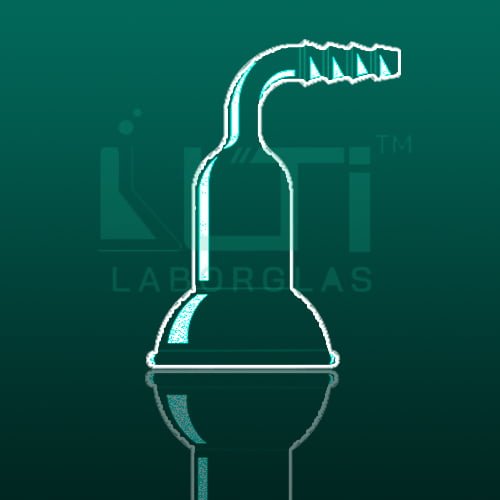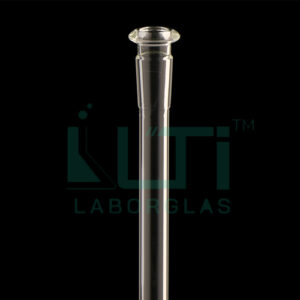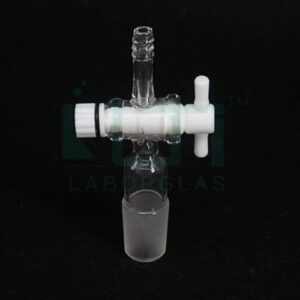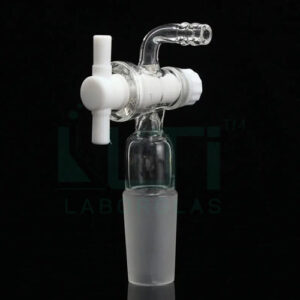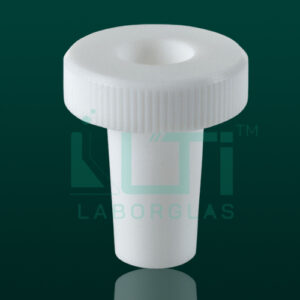Chemical Resistant
| Part No. | Joint | Pack QTY. |
| 2230-18 | 18/9 | 10 |
| 2230-28 | 28/15 | 10 |
| 2230-35 | 35/20 | 10 |
| 2230-35-A | 35/25 | 10 |
Here are potential uses or applications for such an adapter in a laboratory setting:
- Chemical Reactions:
- The 90° bend socket adapter with a hose connection can be employed in chemical reactions to connect different glassware components at a right angle. This arrangement may allow for the introduction of reagents, sampling, or the removal of reaction by-products.
- Distillation Setups:
- In distillation experiments, the 90° bend may facilitate the connection between the distillation flask and the condenser at a right angle. The hose connection might be utilized for vacuum or inert gas supply during the distillation process.
- Vacuum Applications:
- The hose connection could serve to attach a vacuum source, making the adapter suitable for vacuum filtration setups or other processes requiring a vacuum.
- Liquid Transfer:
- This adapter may be used for controlled liquid transfer at a right angle, facilitating processes such as titrations, liquid-phase reactions, or liquid sampling.
- Gas Inlet or Outlet:
- The hose connection may function as a gas inlet or outlet, allowing for the introduction or removal of gases during reactions or experimental processes.
- Laboratory Plumbing:
- The adapter can contribute to the laboratory plumbing system, providing a right-angled and flexible connection for hoses used in various experiments.
- Versatile Experimental Setups:
- The 90° bend socket with hose connection allows for flexibility in experimental setups, accommodating different laboratory configurations and facilitating hose connections at a right angle.
- Standardization:
- The use of adapters following certain standards, such as those set by ASTM, contributes to the standardization of laboratory procedures. This ensures compatibility and consistency in experimental setups.

